Sarah Sundin's Blog, page 253
July 23, 2017
Today in World War II History—July 23, 1942
75 Years Ago—July 23, 1942: At Treblinka concentration camp, Nazis begin mass extermination by gassing.
On Kokoda Trail on New Guinea, Japanese take Awala and force Australians back toward Wairopi.
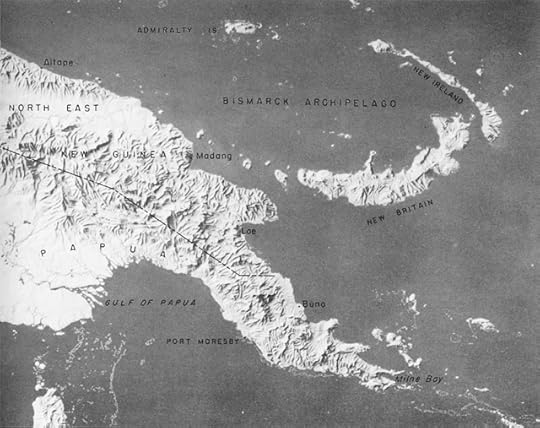
Map of Papua New Guinea (US Army Center of Military History)
July 22, 2017
Today in World War II History—July 22, 1942
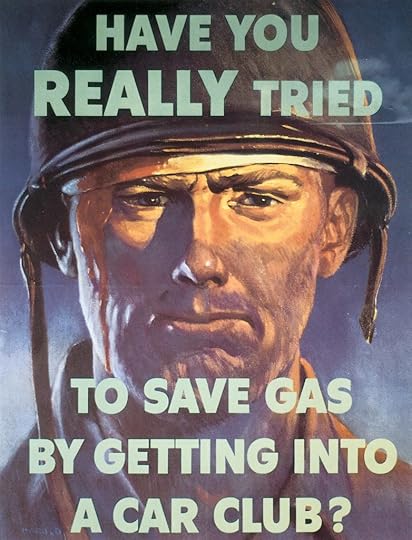
US poster, WWII
75 Years Ago—July 22, 1942: In US, gasoline rationing coupons are issued in 17 Eastern states and rationing begins (Read more: Gasoline Rationing in World War II).
Japanese take Buna and Giruwa, New Guinea, beginning battle for Kokoda Trail.
July 21, 2017
Today in World War II History—July 21, 1942
75 Years Ago—July 21, 1942: Japanese invade Papua New Guinea at Buna and Gona, push south toward Port Moresby.

Aerial reconnaissance photo of Buna-Gona area after Japanese landings, 31 July 1942 (Australian War Memorial)
July 20, 2017
Today in World War II History—July 20, 1942
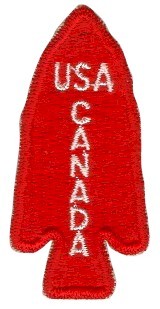
Shoulder patch of the First Special Service Force during WWII
75 Years Ago—July 20, 1942: US forms First Special Service Force (FSSF) under Col. Robert Frederick as a commando unit with both US & Canadian troops.
First US Women’s Army Auxiliary Corps (WAAC) training center opens at Fort Des Moines, IA.
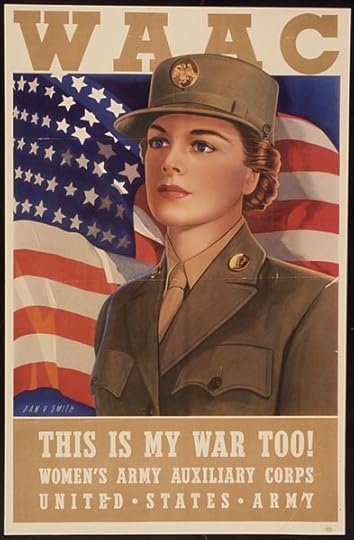
US poster for the Women’s Army Auxiliary Corps, WWII
July 19, 2017
Today in World War II History—July 19, 1942
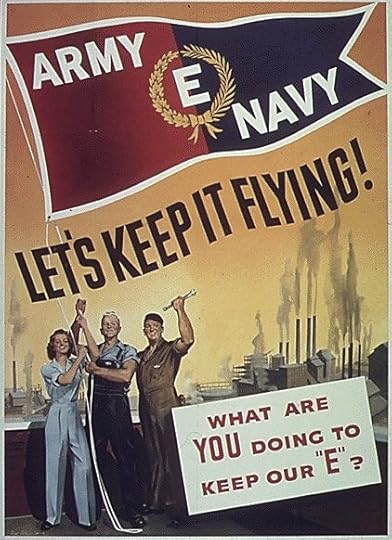
Poster encouraging workers to strive for Army-Navy “E” Award for meeting production quotas, WWII
75 Years Ago—July 19, 1942: German Adm. Karl Dönitz withdraws U-boats from US East Coast to the Caribbean due to American convoy system and increasing U-boat losses.
Army-Navy “E” Award is created for war plants that meet quotas.
George Washington Carver of the Tuskegee Institute begins work with Ford Motor Company in Dearborn, MI, to derive artificial rubber from plant sources.
July 18, 2017
Today in World War II History—July 18, 1942
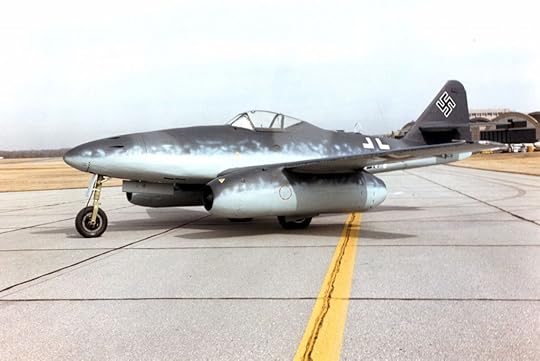
Messerschmitt Me 262A at the National Museum of the United States Air Force (US Air Force photo)
75 Years Ago—July 18, 1942: Germans take Voroshilovgrad, Ukraine, coal and coke center of the Donets Basin.
First flight of turbo-jet powered Messerschmitt Me 262 at Leipheim, Germany.
July 17, 2017
Make It Do – Gasoline Rationing in World War II

US poster, WWII
Seventy-five years ago this week, gasoline rationing began in the United States. Rationing was an important part of life in America during World War II. However, the government was apprehensive about gasoline rationing. As a symbol of freedom of movement, the automobile represented everything American, and politicians feared riots and rebellion if they curtailed that freedom.
Gasoline Shortage
In early 1942, German U-boats ravaged Allied shipping off the US East Coast and in the Gulf of Mexico. Oil tankers were their favorite targets. The Allies needed oil for airplanes, ships, tanks, and to run factories, and the Germans hoped to cut off the supply. It didn’t take long for a gasoline shortage to develop on the US East Coast. On April 9, 1942, gasoline deliveries were decreased to seventeen Eastern states, but to ensure fairness, rationing was required. On May 15, 1942, 8 million motorists in those seventeen states registered for gas ration cards, and rationing began on the East Coast on July 22, 1942.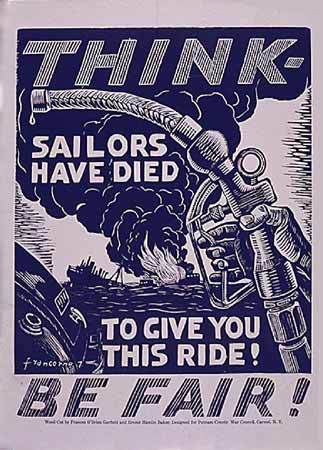
Rubber Shortage
Another serious issue that eventually led to nationwide gasoline shortage was rubber shortage. The United States didn’t have enough rubber for military needs, much less civilian needs. While tires and other rubber items were rationed, the simplest way to reduce wear and tear on tires was to restrict driving.
Drive Less
On Dec. 1, 1942, a nationwide Victory speed limit of 35 mph was instituted, since higher speeds removed tread more quickly. Lightweight Victory Bicycles were introduced in March 1942, but were rationed to war workers and certain professionals and only when public transportation wasn’t available – and all other bicycle production ceased. People were encouraged to use public transportation and their own two feet. Commuters were told to “Carry more to win the war,” and to share rides or form car clubs. Employers experimented with staggered shifts to reduce traffic – and therefore, gasoline use. Pleasure driving was banned and the “Vacation at Home” was promoted, not just to save gas and rubber, but due to the strain on the nation’s train system by military transport.
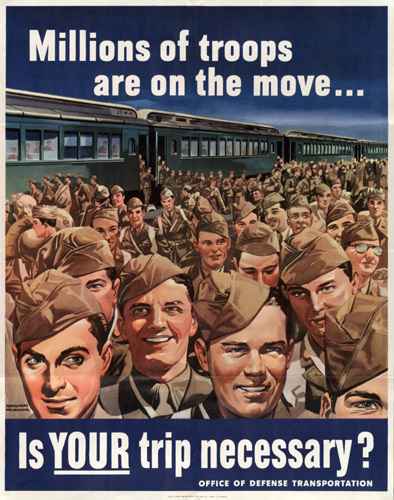 Fewer Cars
Fewer CarsCar manufacturing stopped on Jan. 1, 1942, and no new automobiles could be purchased after Feb. 22, 1942. A small stock was held in reserve for critical replacements. The auto manufacturers converted their assembly lines to produce jeeps, tanks, and bombers, while the American consumer made do. Car theft became a larger problem than ever. On July 1, 1945, automobile production was allowed again, and the first car rolled off the assembly line on Aug. 30, 1945 – a Hudson Super Six coupe.
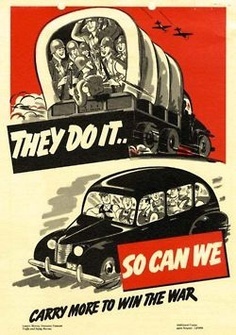 Nationwide Gasoline Rationing
Nationwide Gasoline RationingAlthough the U-boat menace decreased late in 1942, the rubber shortage remained crucial. On Nov. 26, 1942, the government announced that nationwide gasoline rationing would go into effect Dec. 1, 1942. The program continued until Aug. 18, 1945.
Stickers and Coupons
The American public learned to deal with an elaborate system. Every motorist was issued a windshield sticker displaying a letter. Some of these categories changed, emerged, or were eliminated during the war:
A: most motorists – 3 gallons/week, reduced to 2 gal/wk March 22, 1944
B: for war workers who shared rides with 3 or more passengers – 8 gal/wk
C: essential occupational use, such as physicians, clergy, and mail carriers
D: motorcycles
E: emergency vehicles such as ambulances, police, fire – unlimited
R: non-highway use, such as farm vehicles – unlimited
T: truckers, instituted January 1, 1944 – unlimited
X: a controversial sticker for VIPs – unlimited
 At the gas station, the attendant checked the windshield sticker and took the required number of ration book coupons – also marked with the appropriate letter. Of course, payment was also required – about 19 cents/gallon.
At the gas station, the attendant checked the windshield sticker and took the required number of ration book coupons – also marked with the appropriate letter. Of course, payment was also required – about 19 cents/gallon.Gas Shortage
Despite rationing, a serious gas shortage developed early in 1944. The high military use and restricted shipping contributed to this problem. In January 1944 on the West Coast, very little gasoline was available – and none at all in Sacramento, California, not even for emergency vehicles. On March 22, 1944, “A” class drivers were further restricted to 2 gallons/week.
Not everyone complied. The black market became quite profitable, cases of gas siphoning made the front page of small-town newspapers, and several ration book forgery rings were broken up.
How do you think modern-day Americans would deal with these restrictions?
Today in World War II History—July 17, 1942
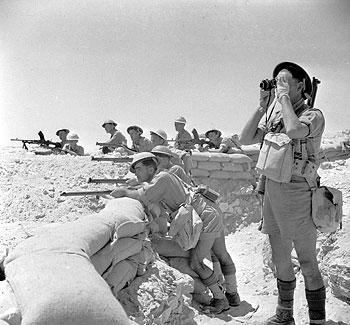
British troops near El Alamein, Egypt, 17 Jul 1942 (Imperial War Museum)
75 Years Ago—July 17, 1942: Due to disastrous losses in convoy PQ-17, Churchill tells Stalin that Arctic convoys to Murmansk, Russia are halted (will resume in September 1942).
Italians repulse British attack at Miteirya Ridge at El Alamein.
Flooding in Pennsylvania kills 15 after state record of 34.5 inches of rain.
July 16, 2017
Today in World War II History—July 16, 1942
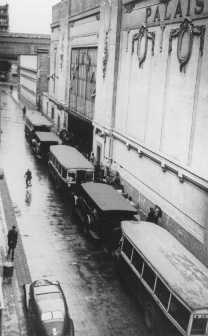
Buses waiting at the Vélodrome d’Hiver, where 13,000 Jews were assembled before being transported to Drancy and other French transit camps, Paris, July 16-17, 1942 (Bibliotheque Historique de la Ville de Paris, via US Holocaust Memorial Museum)
75 Years Ago—July 16, 1942: Nazis round up 13,000 foreign Jews in Paris at Vélodrome d’Hiver for deportation to concentration camps.
US Navy forms Task Force 61, Solomons Expeditionary Force, under Vice Adm. Frank Fletcher, and Task Force 63 over all Allied land-based planes in Southwest Pacific, under Rear Adm. John McCain.
Canada changes Income Tax Act to encourage married women to work.
July 15, 2017
Today in World War II History—July 15, 1942
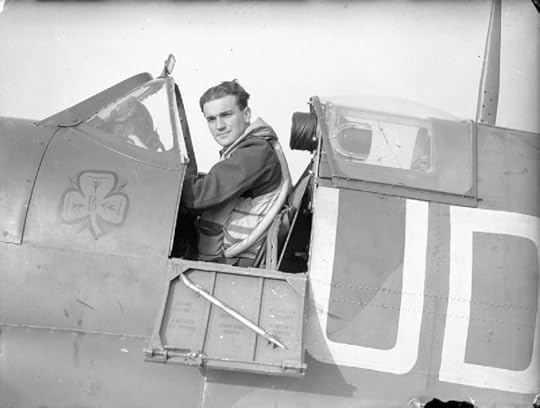
Flight Lt. Brendan ‘Paddy’ Finucane, an Irishman who flew with the RAF, in the cockpit of his Spitfire at RAF Kenley, 1941 (Imperial War Museum)
75 Years Ago—July 15, 1942: Irish RAF ace Brendan “Paddy” Finucane (32 victories) is killed in action over northern France.
US Army Air Force forms Ground Observer Corps for civilian volunteers under Civilian Defense.



